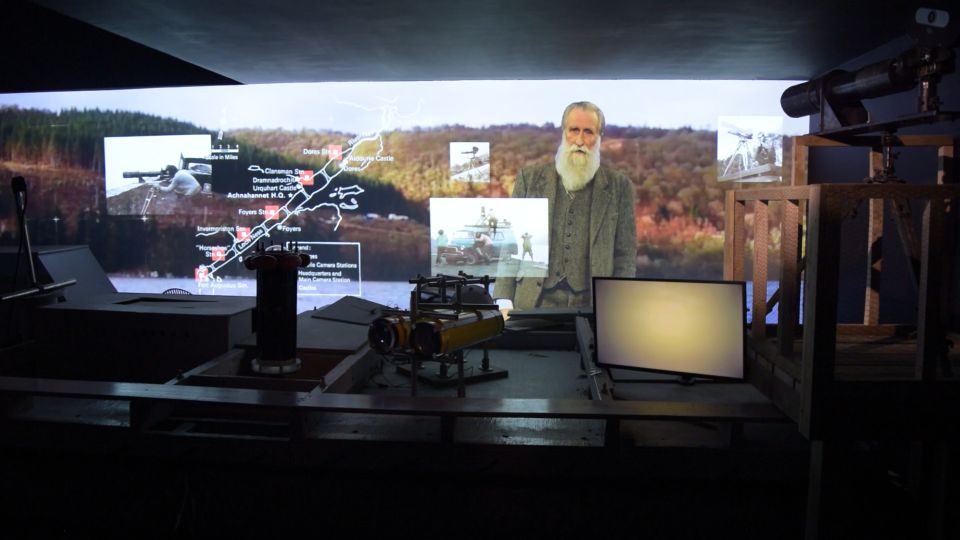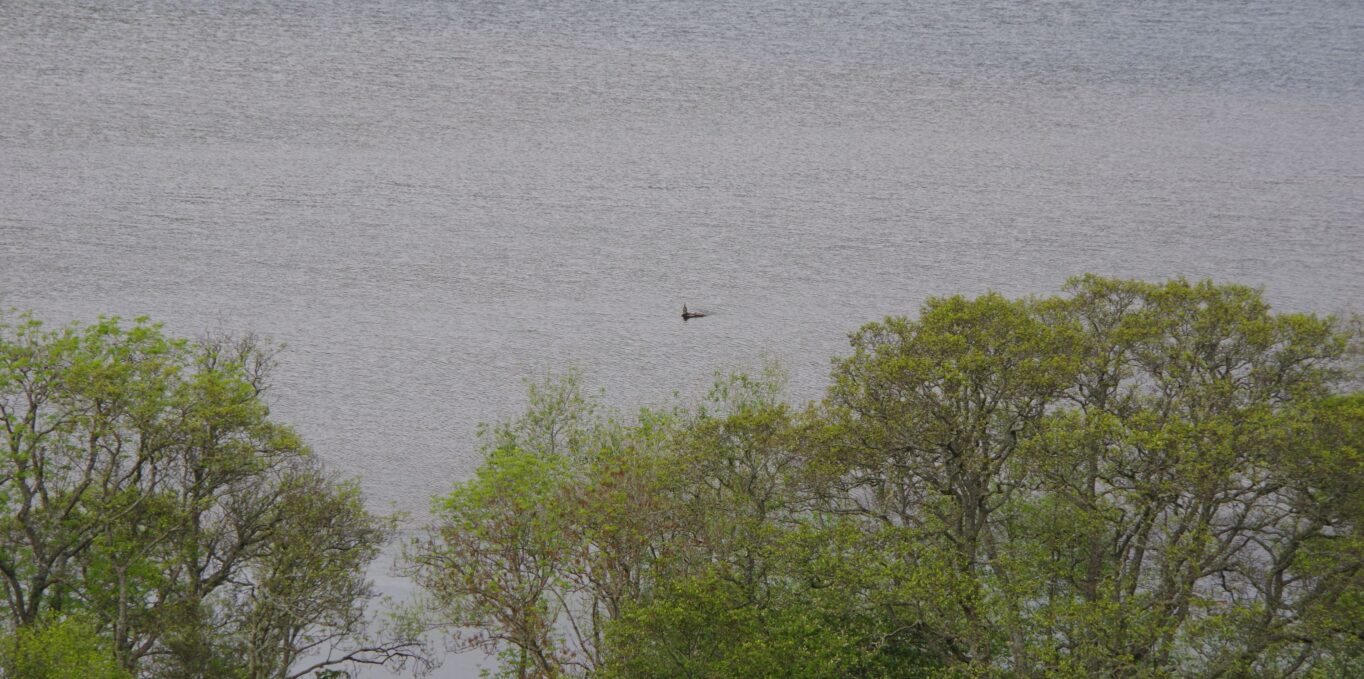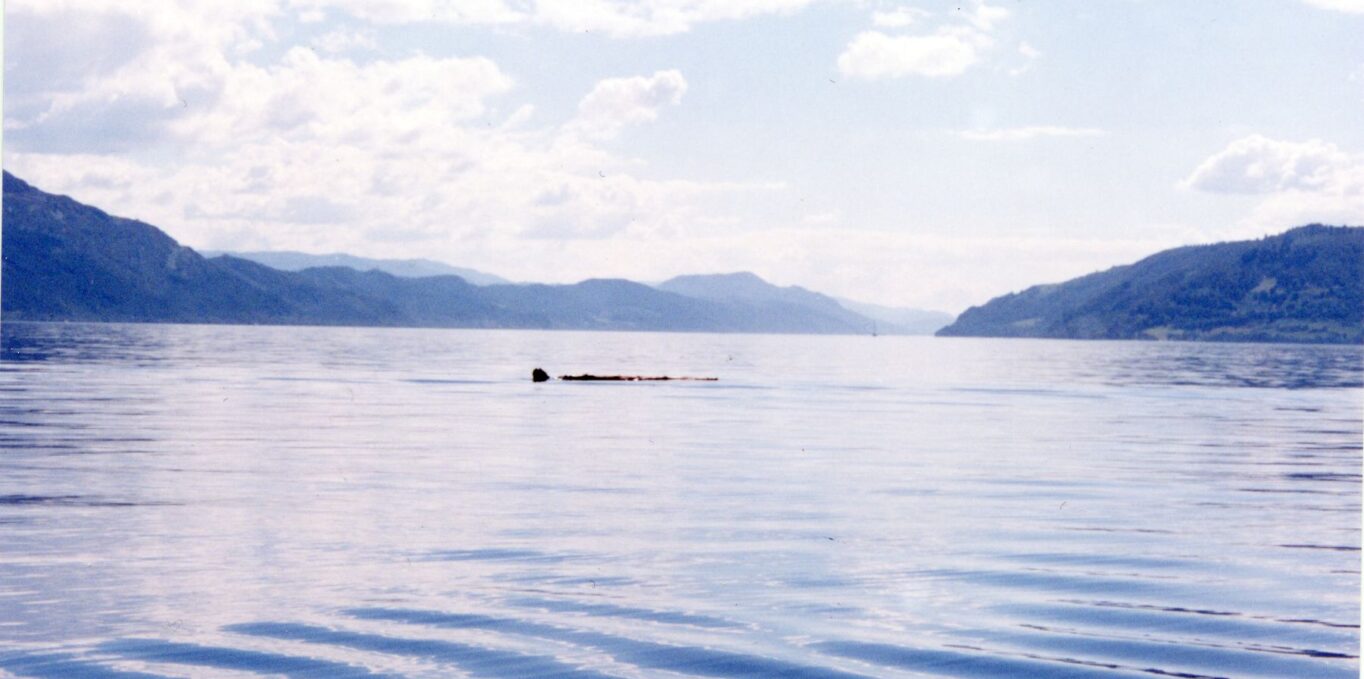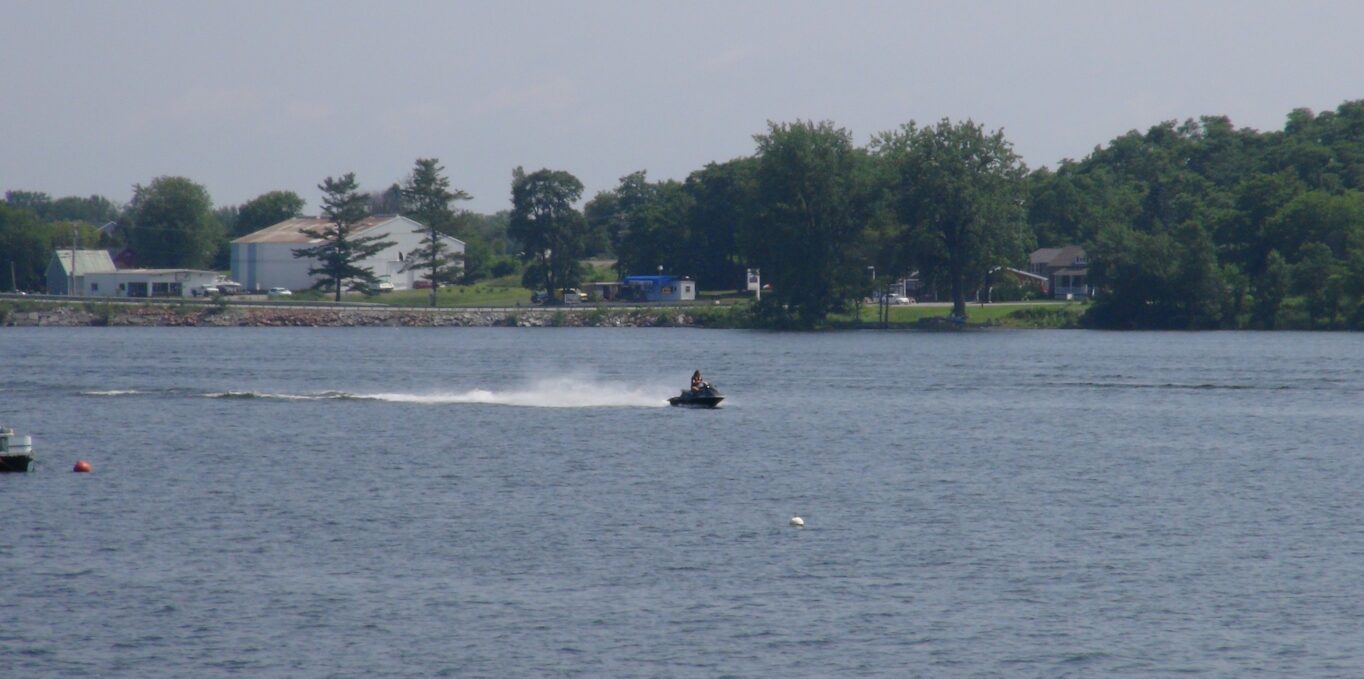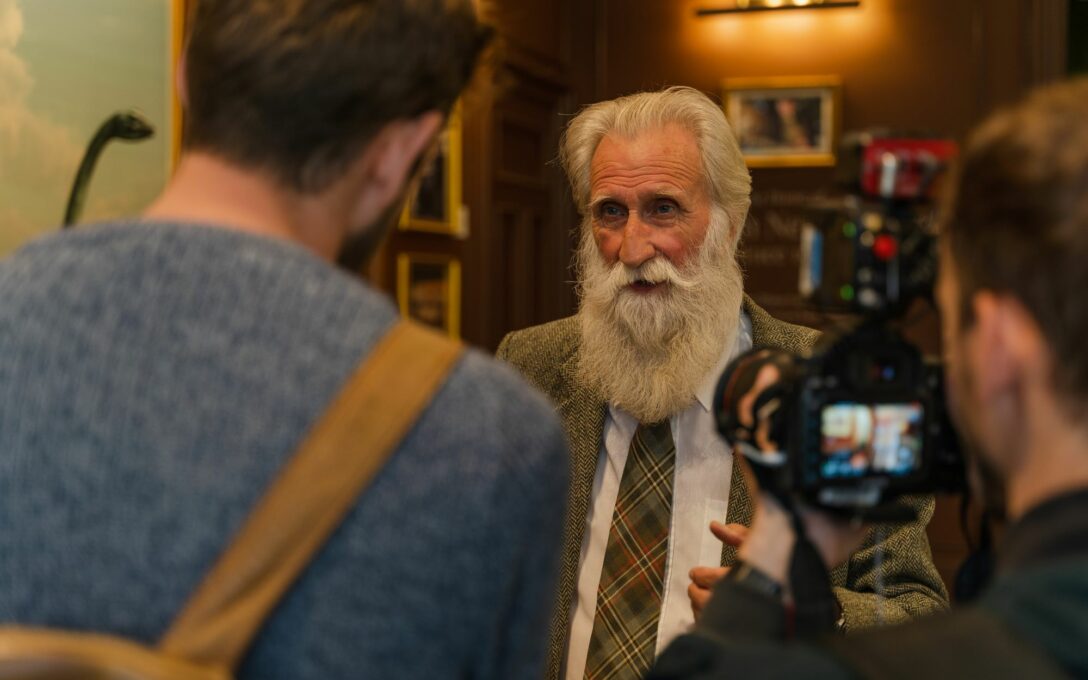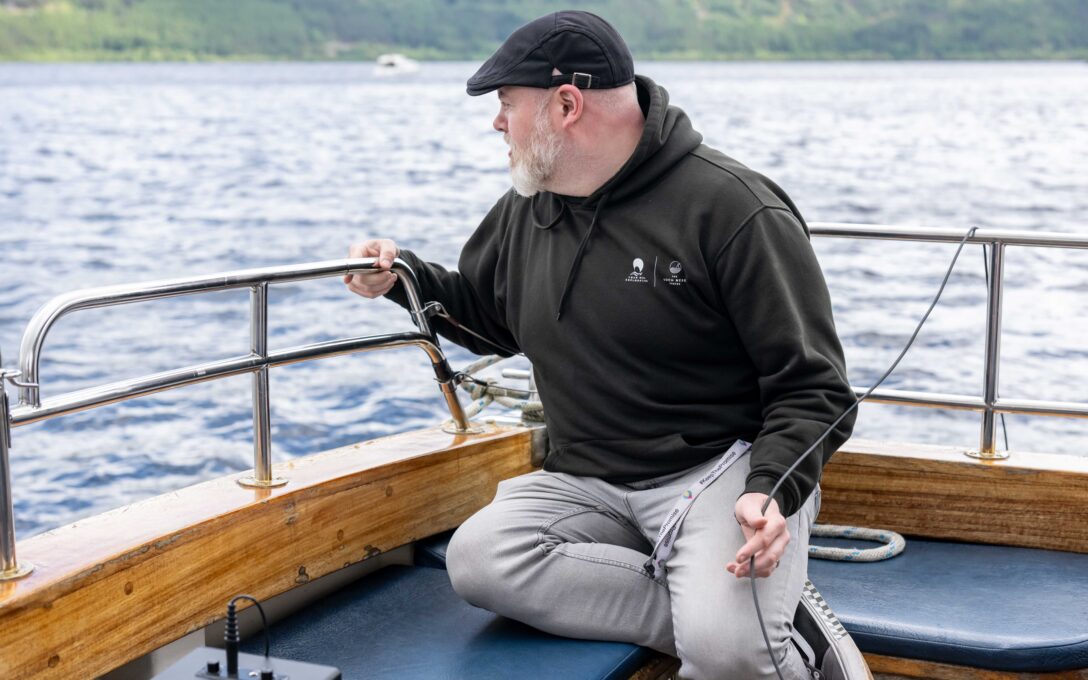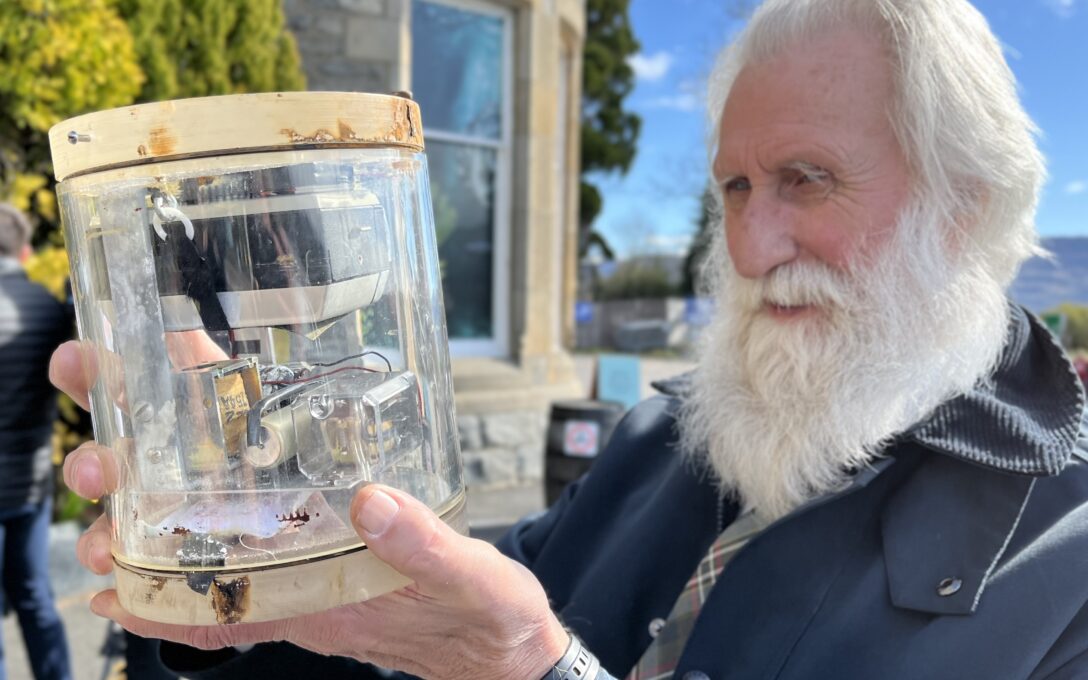Odd it may seem, but it is the water which is moving against the wind. What happens is that in the summer the loch divides into two lakes of water, one above the other. The warm top layer floats on the denser colder water underneath. The division between the two becomes sharper as the season progresses and is called the ‘thermocline’. The mountains on either side of the glen funnel the wind along the length of the loch, pushing the warm water to one end. This tilts the thermocline down in that direction, but it also tilts to the right because of the Coriolis force. This can sometimes be so pronounced that the cold water can break surface to the left and displac
ed to flow upwind bearing floating objects, such as those logs, in that direction. Something else happens when the wind drops beyond a certain point. All the warm water flows back to regain equilibrium forming a great invisible underwater wave, but rebounds from the other end of the loch and ‘slops’ back and forth for some weeks. This is known as an internal seiche. That’s when things get complicated but from time to time, the water is going to be flowing slowly against the wind. And that’s all it takes for us to rationalise our experience into a Loch Ness Monster.
And now we come to the crux of the issue and it’s all about that calm flat water. That’s when it isn’t just about perceiving shapes; it’s about judging size. The point is, that if we want to know the size of something we don’t recognise, our perception seeks clues as to the distance it is away from us. There might be some familiar objects in our view or it might be some recognisable texture in the scene. At Loch Ness, this texture can be waves and their diminishing size allows us to subconsciously judge the size of the unknown object. However, when the water calms, particularly if our viewing angle is low, these clues to distance are removed and it is easy to overestimate the size of the object we are looking at. There are many reports of monsters looking like enormous swans. This is also when merganser ducks and cormorants can seem much larger than they are and become long necked plesiosaurs.
Every now and again, something new and unfamiliar crops up to raise our expectations of monsters. From the late 1970s a new form of craft began to appear on Loch Ness. These were jet skis. They and their riders were fairly obvious close up but, given the size of the loch, were often seen a long way away. The craft itself might be invisible, but the great plume of spray and wash can be seen from a mile away.
Book tickets online


